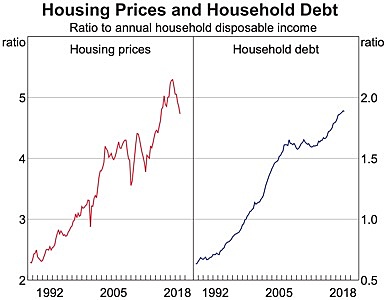Australian property price forecasts are diverging

Depending on who you listen to, now is either an opportunity to buy or time to reduce exposure in Australia’s real estate market.
There is a little bit of everything for those who like to forecast Australian property prices at the moment.
If you love your doom and gloom laid on super thick, it is hard to go past LF Economics founder Lindsay David, who made the claim that prices could halve or at least fall by 40% from their peak in Sydney and Melbourne.
He claims that on a “base case’’ of a 20% price fall in the major capitals this year alone, followed by a financial armageddon in which the profitability of the big banks evaporates, properties go unsold after mortgage defaults, the residential construction industry virtually halts, unemployment soars and banks have to be bailed out or nationalised.
Readying for a once in a century collapse
Not to leave any cliché unused, this would produce Australia’s worst real estate wipe-out since the 1890s depression and real estate collapse.
This research, which was gleefully titled “Let the bloodbath begin’’, is not alone in bearish predictions for Australia’s property markets, although it is by far the most extreme.

AMP Capital has tipped a total peak-to-trough fall in property prices of 25% in Sydney and Melbourne, while UBS has upped that slightly with 25% and possibility of 30%.
CoreLogic data for January showed Sydney and Melbourne prices were now 12.3% and 8.7% down from their respective peaks, which were recorded in July and November 2017.
Get in now, the price falls won’t last?
Of course, not everyone is convinced by the bearish predictions of an 1890s style apocalypse, with economists Ric Deverell and Justin Fabo at Macquarie Bank warning that the price falls might not be around for much longer.
Suggesting buyers should get a move on if they want to take advantage of the current falls.
The Macquarie reasoning is that house building and building approvals have contracted faster than most people expected – including themselves.
Lower housing starts good for prices
“The recent annualised run-rate of around 220,000 starts is increasingly likely to fall to around 150,000 to 160,000 this year, below underlying demand of around 180,000 dwelling per annum,’’ the Macquarie research said.
“Higher density housing construction, particularly high-rise apartments, will fall much more sharply than detached house construction amid the retreat of both domestic and foreign investor demand.”

With the level of construction running below the anticipated underlying demand, that could lead to a slowing and even a reversal of the current price drops.
That would particularly be the case if population growth and immigration remained strong.
Rental vacancies still low
Unlike some other commentators, Macquarie said that there is not much sign of overbuilding, even with the record pipeline of completed houses.
Apart from Sydney, Macquarie said the rental vacancy rate has actually fallen a little over the past couple of years to be a bit below average.
That provided some evidence that there wasn’t too much overbuilding of dwellings at the national level.
Housing affordability still a big issue
“As dwelling completions decline and population growth is expected to remain strong, it appears likely that murmurings about housing affordability will re-emerge in the not-too-distant future,” Macquarie found.
What these diametrically opposing views show is that forecasting is much more of an art than a science.
The other thing that should be remembered is that Australia’s property market has gone through a world beating rise, so even if the bleakest prediction was to come true, it still wouldn’t completely erase long term price growth.
Sydney and Melbourne property prices have almost doubled after the GFC in 2008 so the current percentage falls are like blowing the froth off a beer.
What happens from here on is the big question, some areas of the economy are showing strength such as the jobs numbers and the fact major banks are reporting very low loan defaults, however on the flip side the Australian economy has now experienced two quarters of negative growth on a per capita basis.
